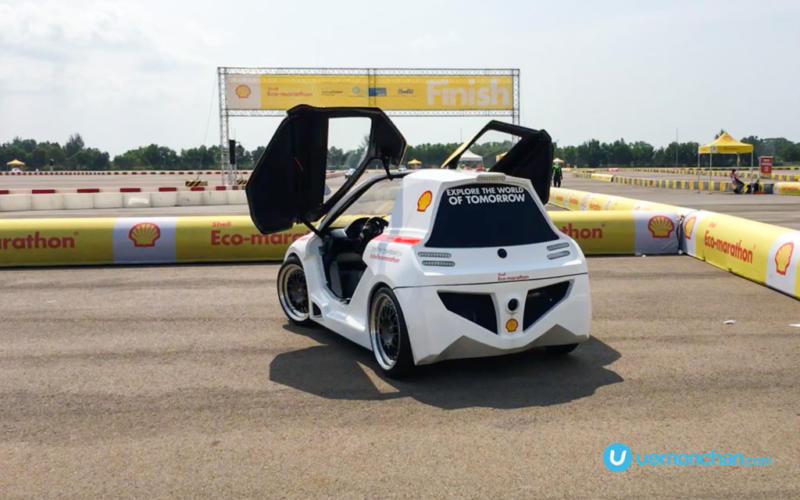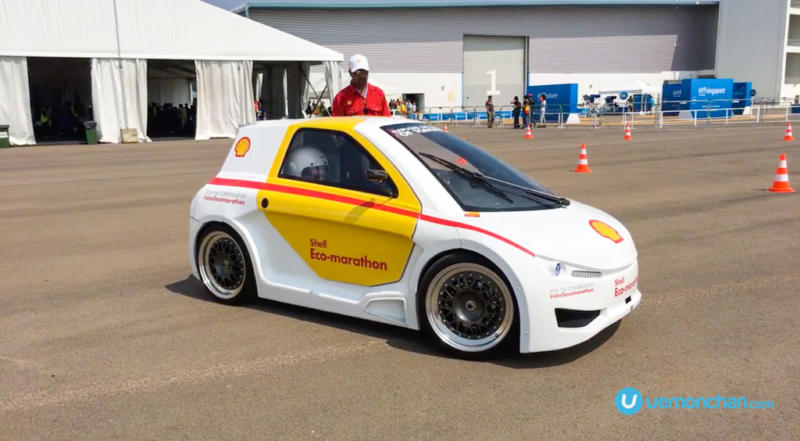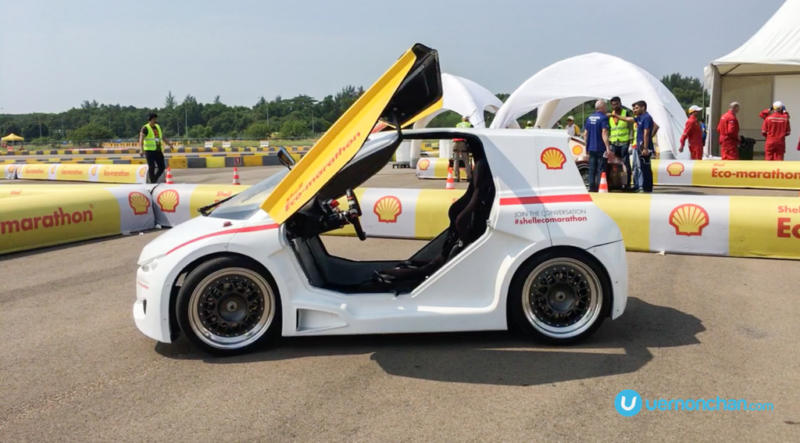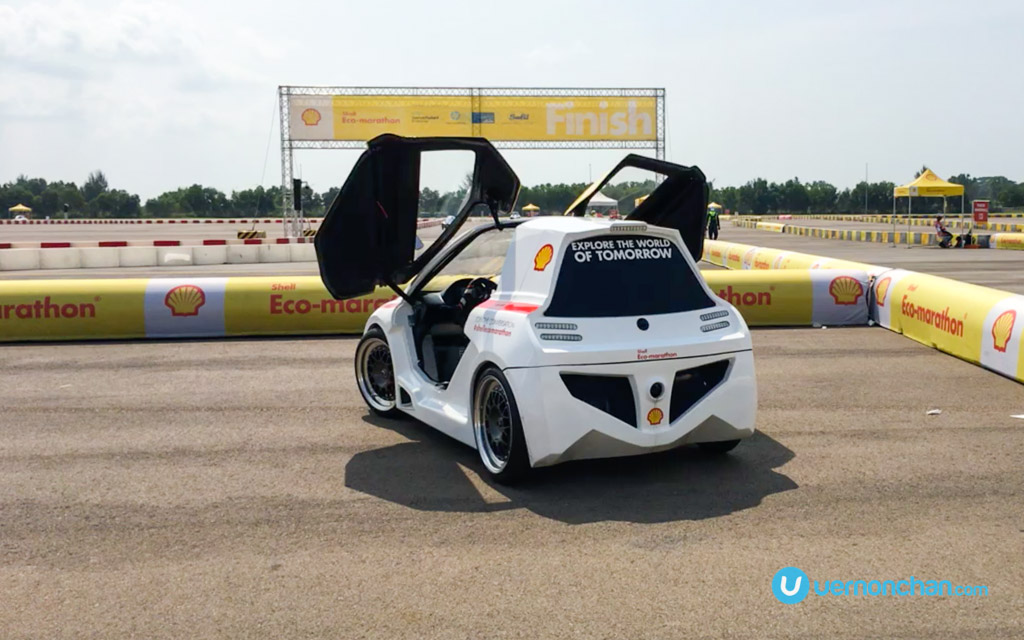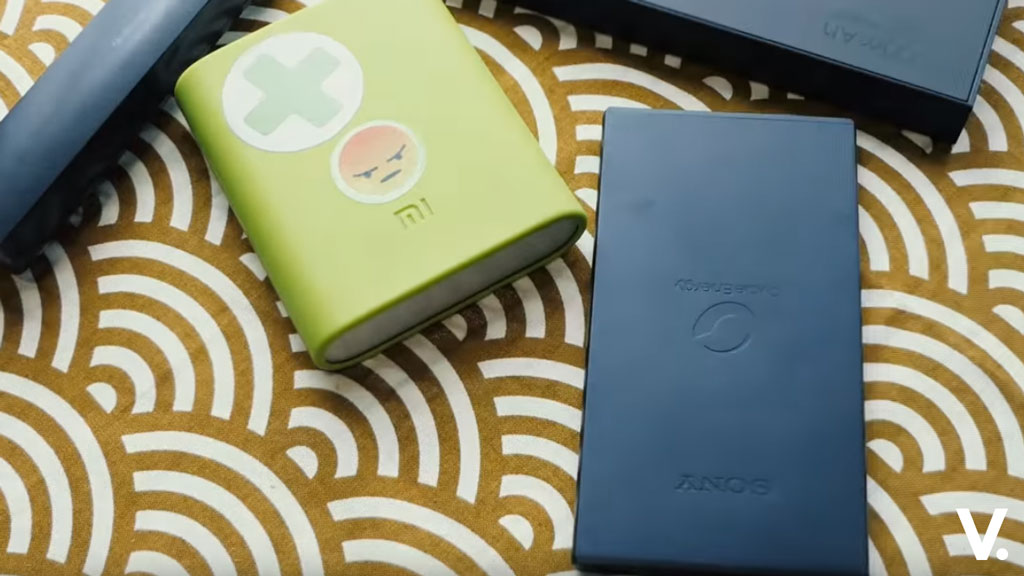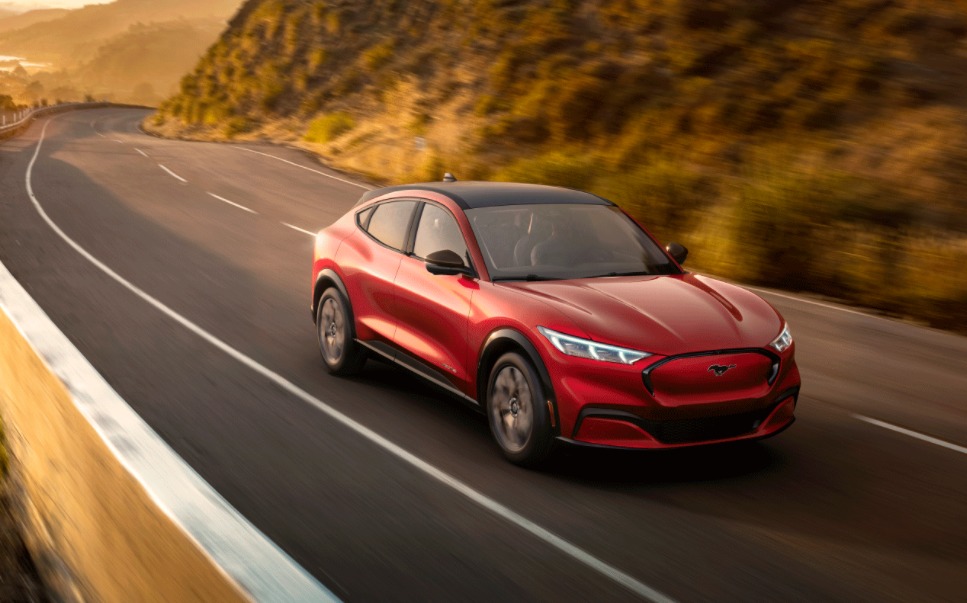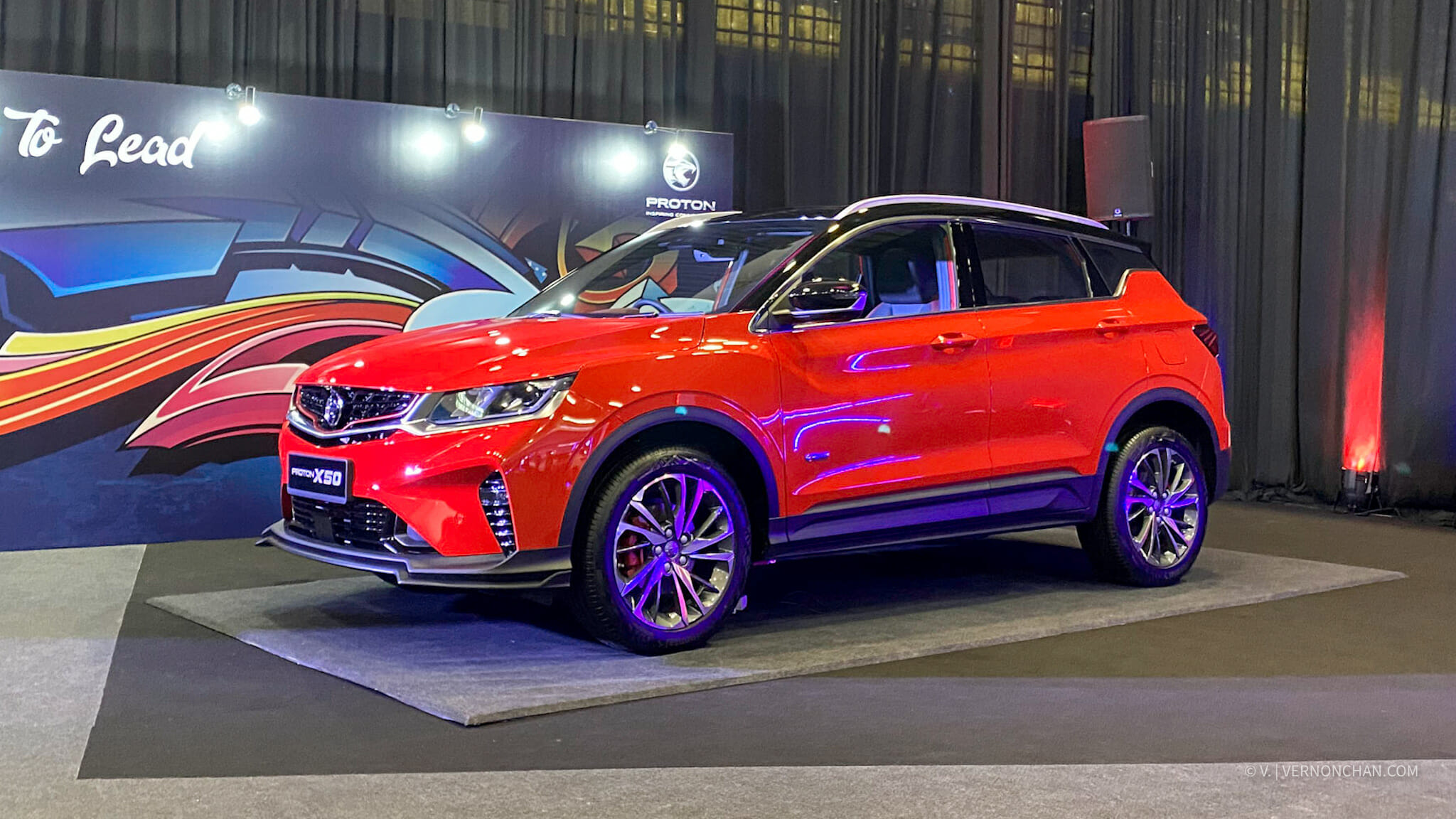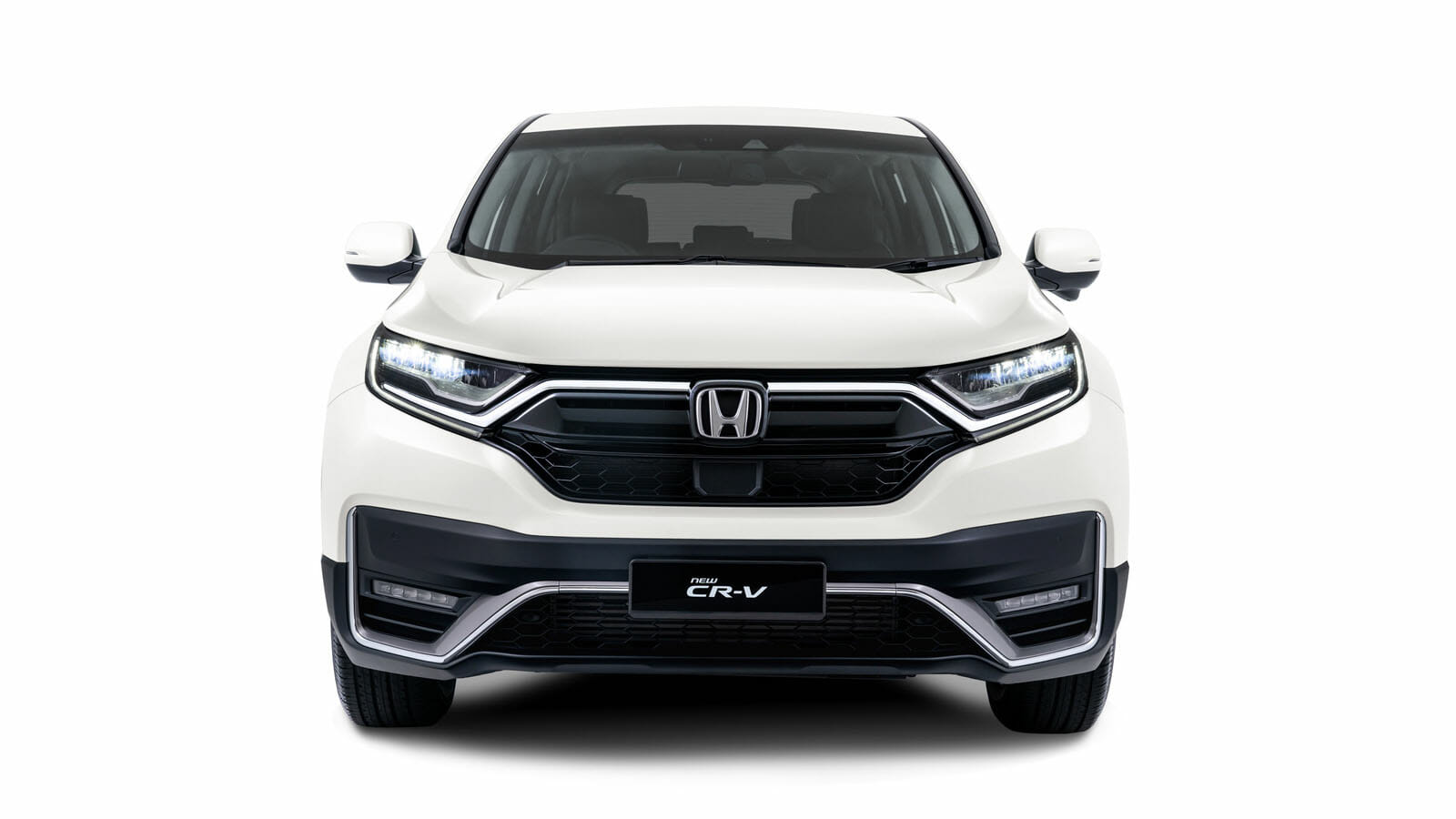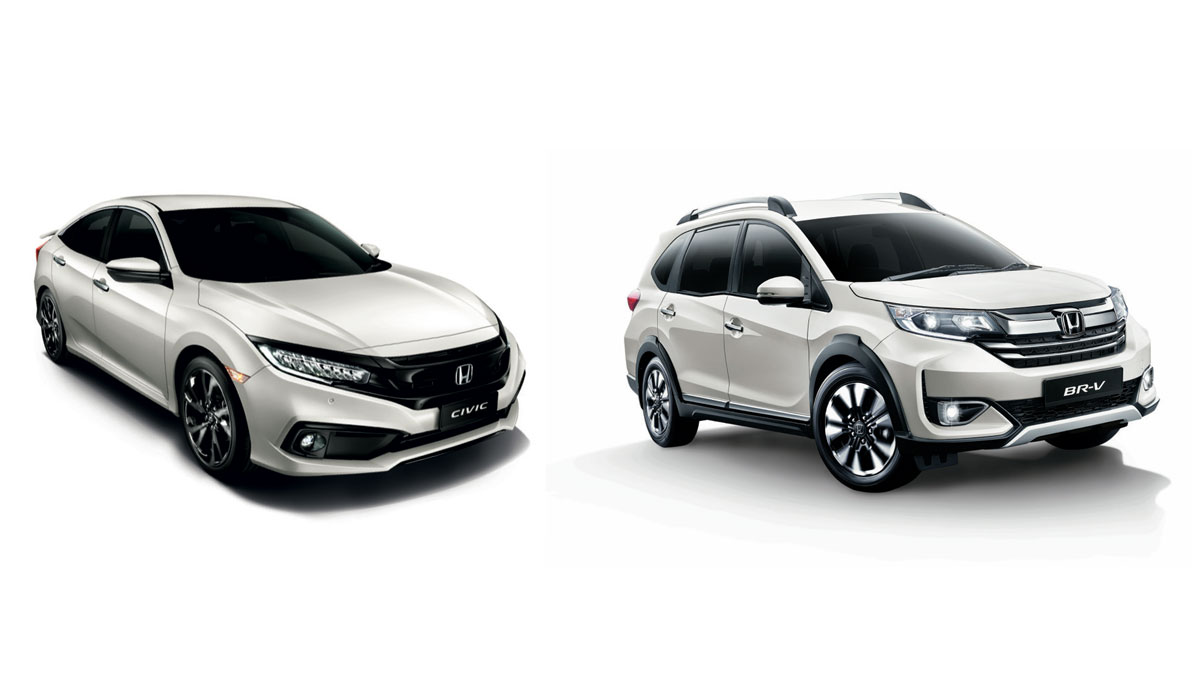“Nope,” said Ian Albiston, Shell technical specialist after taking a quick glance at my 6-foot-one frame. My heart sank. I quietly wept inside as I gave Ian the sincerest smile I could as I replied, “that’s OK.”
I was looking forward to the third day of the Make the Future Singapore bright ideas festival. Simply because I was meant to be in the driver’s seat of a purpose-built, ultra-efficient single seater prototype. This was part of the Shell Eco-marathon media experience.
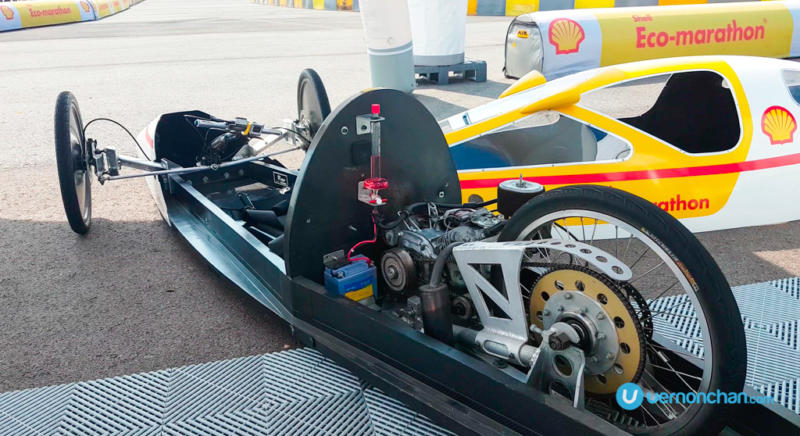
A tall order
Whoever said being tall was an advantage should literally be kicked in the groin. OK, let’s not get melodramatic.
Before I go further, allow me to give you a primer of what the Shell Eco-marathon is. I’ve written about it extensively here, here and here, but I’ll save you some reading for now.
In a nutshell, Shell Eco-marathon is a student competition that looks to find the most energy-efficient vehicle. Students from all over the world engineer, design, build and drive their own energy-efficient entries.
In its eighth year, the competition was hosted for the very first time in Singapore. Also for the first time is the introduction of the Drivers’ World Championship Asia, a unique head-to-head race format.
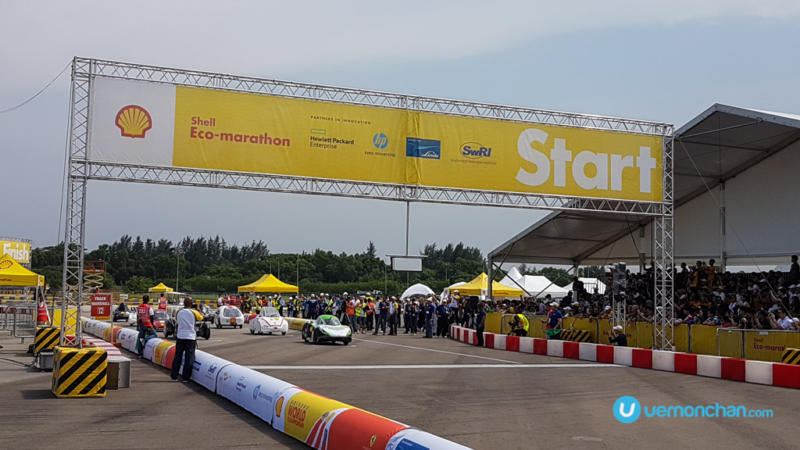
There are two main categories – UrbanConcept and Prototype. UrbanConcept vehicles resemble today’s typical road-going cars. On the other hand, prototype cars are futuristic, highly aerodynamic vehicles.
Teams have a choice of energy sources – Internal Combustion Engine (ICE): gasoline, diesel, ethanol (biofuel), Gas to Liquid (GTL), CNG (compressed natural gas; Hydrogen fuel cell; and Battery Electric power.
So, Shell themselves have a couple of reference vehicles built to the same specifications as the Shell Eco-marathon vehicles in the UrbanConcept and Prototype categories. These are mainly used to give guests, VIPs and media a hands-on experience, so to speak, of the cars.
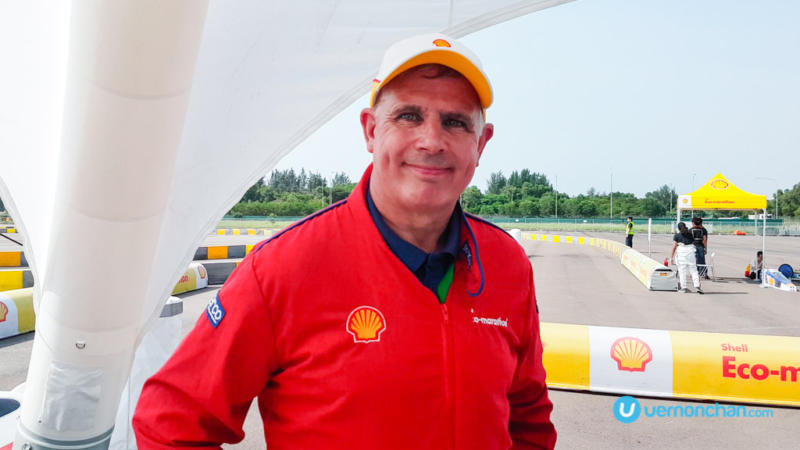
As mentioned, I was supposed to have driven one of the sub-140kg prototypes. But of course, the universe had other plans for me.
Based on official regulations and specifications, the Prototype vehicle can have three or four wheels, and the maximum weight (without driver) is 140kg. There are strict dimension regs too – a maximum total length of 350cm, and total width of 130cm.
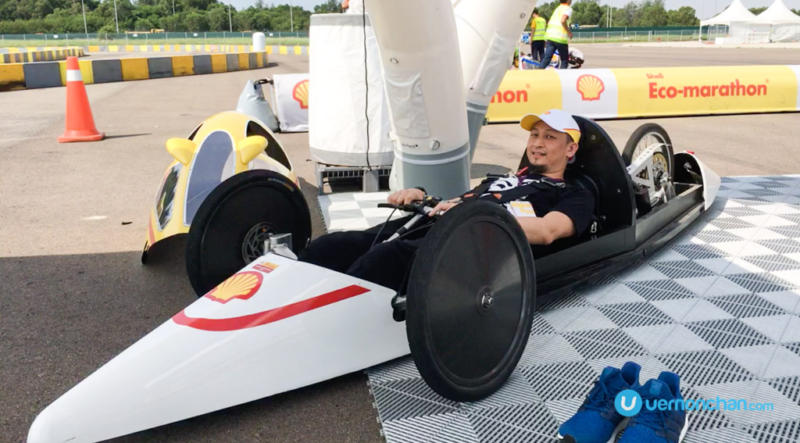
A horizontal formula
The Shell Prototype is like a mini Formula car, running a lawnmower engine that drinks 95 RON gasoline.
Just for kicks, I did a fitting. I had to take off my shoes (sorry Ultra Boost). I squeezed my oversized butt into the bucket seat, and slid my feet into the front wing. Hmm…challenging.
The seating position is very much like a Formula car, just several sizes smaller. You’re pretty much in a lying down, horizontal position.
With the steering literally in between my legs, one of the technical hands helps me strap in with the five-point harness.
There are no foot pedals, so everything is controlled via the steering. And the steering isn’t your typical circular type either. You control the front and left brakes, as well as accelerator with your hands. Steering the wheels is a push-pull action, yes, very much like a bike.
A start/stop button, an essential element in the eco-cars, is situated on the bottom right of when you ‘rest’ your arm. I say essential element because starting, stopping and restarting the engine strategically, is an art in an eco-marathon.
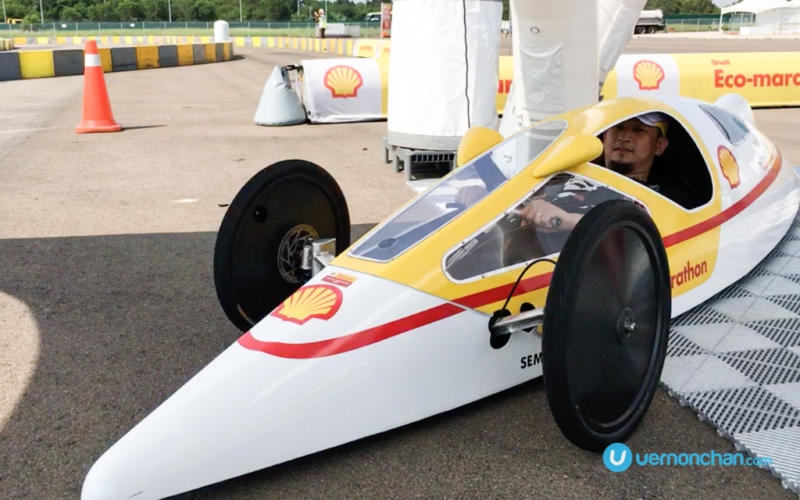
Due to my height, and the reason why I’m also disqualified from driving the prototype – I cannot put on a safety race helmet and affix the canopy.
With the canopy on, visibility is adequate at best. I can describe the in-car experience as “claustrophobic.” Give me a Formula car anytime, though 🙂
I kind of quickly forgot about the prototype as Albiston said, “let’s get into the UrbanConcept, I’ll give you a taxi ride.”
Concept cool
Now, let me tell you about Shell’s UrbanConcept car. It’s pretty cool-looking to be honest. Futuristic and cute, in a Smart ForTwo kind of way. You may also want to check out Project M.
It’s got gullwing doors and a pretty tricked out race-bred interior complete with bucket seats and rollcage for safety.
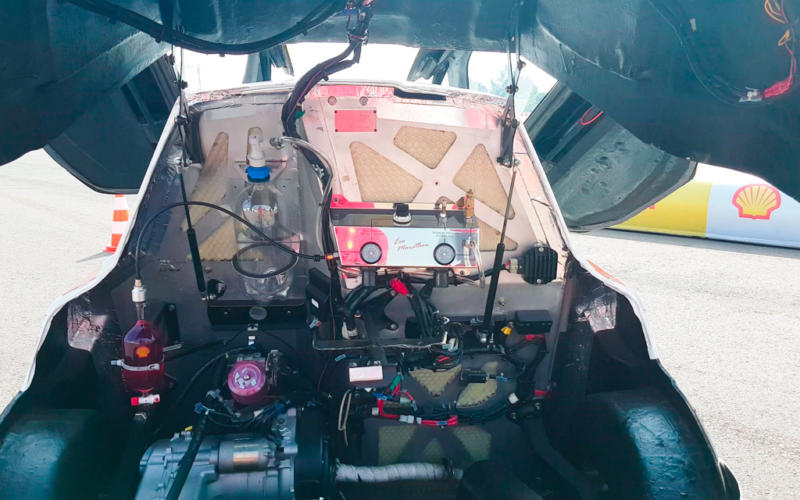
Pop the rear hood, and you’ll see a 125cc engine (transplanted from a scooter), neatly tucked in the rear of the vehicle. As with the Prototype, it drinks regular gasoline.
From here on, I’ll just call this a race car, because it’s every bit one. Stepping into the well-made cabin, I lower myself into the bucket seat and get strapped in. I seem to be getting strapped up with harnesses a lot today.
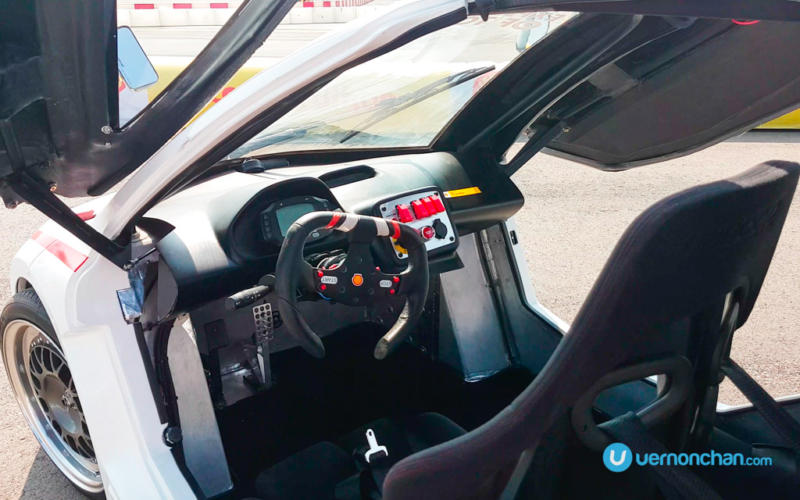
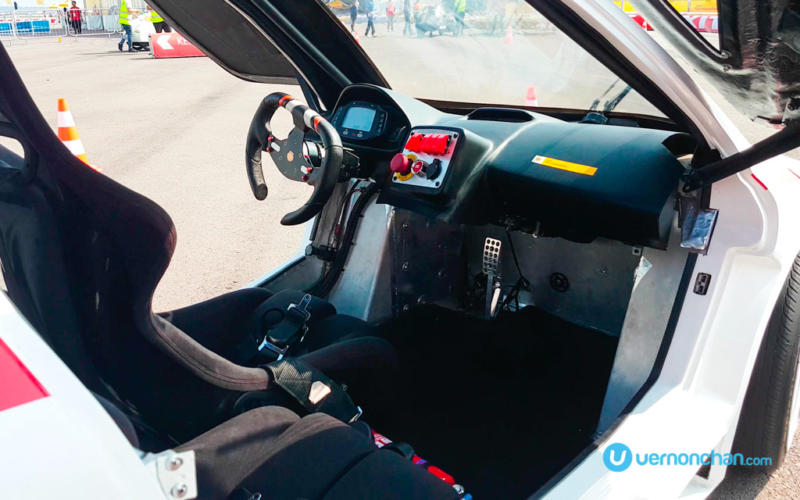
And so, two 6-foot tall men squeeze into a 250kg car. Cosy is the word. OK, maybe not.
Anyways, Albiston fires up the engine by prodding the push start button, and off we go to the Start line.
He reminds me that we’ll be running on the actual track the competitors are using for qualifying. So, we’ll need to be observant and not obstruct any of the cars.
The track marshal flags us off, and Albiston puts the pedal to the metal, so to speak.
Let’s not forget why we’re here. It’s an eco-marathon, and thus it’s about going the furthest while burning the least fuel. And of course keeping in mind, we’d like to be quick to the finish line, to win.
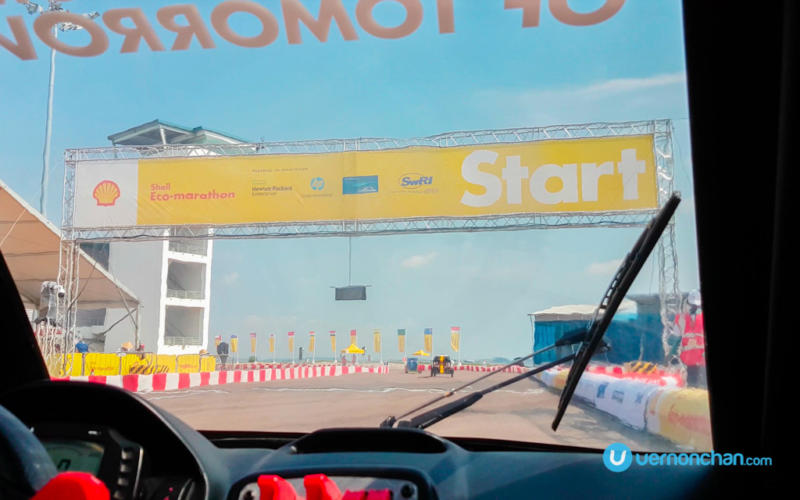
Again, the UrbanConcept race car is built to the Eco-marathon competition spec. It needs to be a maximum of 225kg in weight, have four wheels (Prototypes can have three minimum), stipulated safety gear like roll cage, brakes and brake lights. It must be able to run in the rain, thus needs to have working wipers and be properly sealed.
And by the way, as stated in the rules, the minimum driver weight is 70kg. I think that’s something we passed with flying colours.
With that, I bring you back in-car. We fly by the first chicane, then the first straight. Albiston sounds the horn as we overtake a couple of slower student cars.
The race car seems to handle pretty well – its handling prowess demonstrated as Albiston takes on the sharp right turn. Just as in circuit racing, it’s essential to find the best racing line to maximise both entry and exit speed.
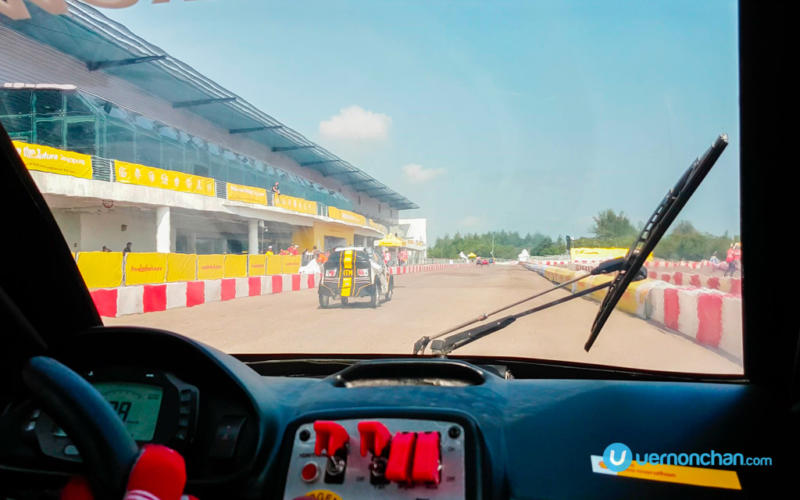
As we exit the double apex turn (reminds me of Turn 6-7 at Sepang International Circuit), Albiston turns off the engine. I was like… what?
Coasting on the back straight, it now all depends on the rolling resistance of the car. From about 30km/h, I see the speed on the digital speedo taper down to 15…, 12…, then as it hits 10km/h, Albiston fires up the 125cc lump again just as a quicker car honks and whizzes past us. The car theoretically can hit a 40km/h top speed, but we saw none of that today.
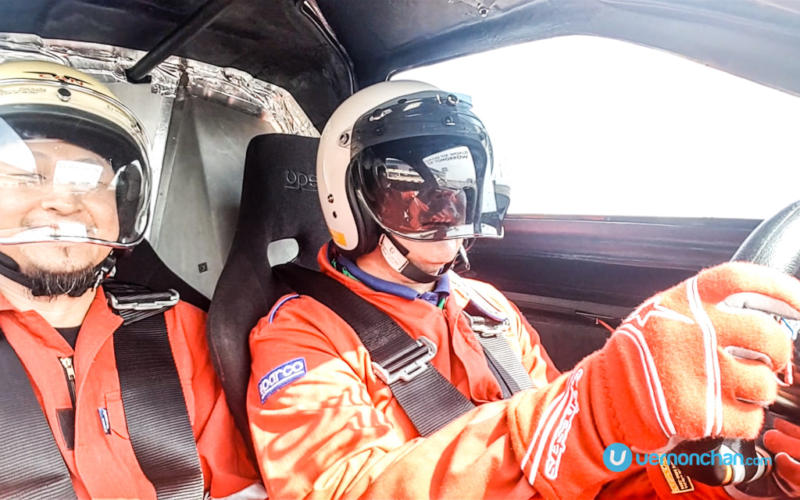
From the first lap I can deduce that it gets challenging when there’s traffic on the track. If you brake to avoid traffic, you’ll end up not being competitive in the next couple of turns when you’re in coasting mode. And this will ultimately effect the fuel efficiency of the car.
Albiston had to fire up the engine slightly earlier than scheduled as he encountered some traffic ahead, as we approached the Finish line.
He gave me one more lap before we pitted in.
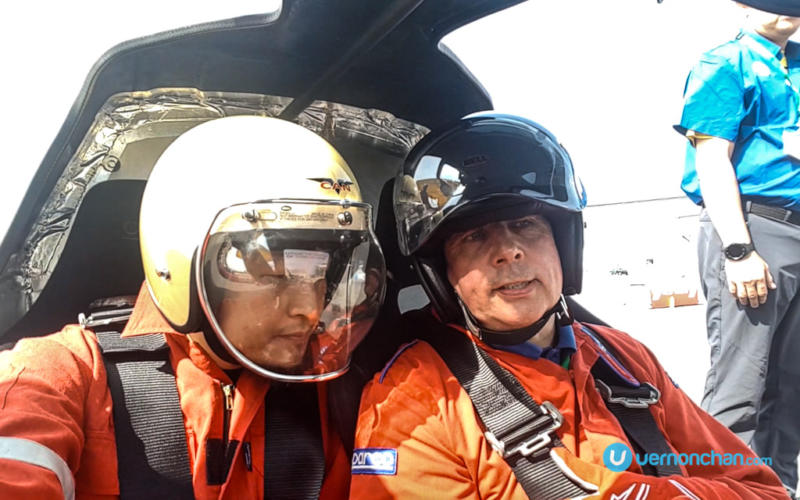
It’s a shame that neither our lap times, nor fuel efficiency were recorded but the experience itself was an eye-opener. And it would have been interesting to see how I’d fare at the wheel.
In summary, I have a newly-found respect for all the students who designed, built and put their cars to the test at the Eco-marathon. It’s pretty mindblowing.
Make the Future
Shell Eco-marathon was hosted for the very first time in Singapore, as part of the Make the Future Singapore festival. Make the Future Singapore is the Asian instalment of a global festival of ideas, focused on energy.
For more information, visit www.shell.com.sg/makethefuturesg
For on-the-ground updates, follow me at vernonchan.com/tag/makethefuture2017, as well as on Facebook, Twitter and Instagram.
#MaketheFuture #shellecomarathon #SEMA20
Gallery
